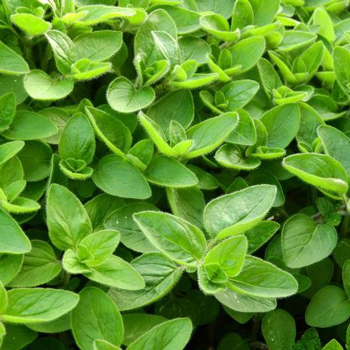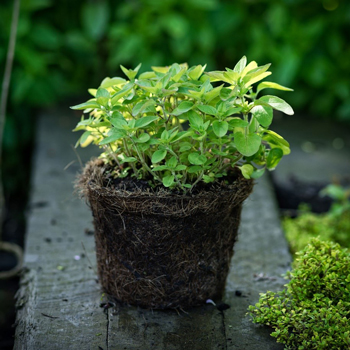Marjoram: a versatile medicinal plant for cooking and aromatherapy
Marjoram is a plant mainly used in culinary applications. But research has shown that it can be used in medicinal applications as well. Studies show that marjoram has antioxidant and antimicrobial properties. Marjoram may also help promote digestive health and lower the risk of cancer.

The marjoram plant (Origanum majorana) is an aromatic herb known for its aromatherapeutic and culinary uses. Its botanical name literally means “mountain beauty.” Interestingly, since marjoram and oregano (Origanum vulgare, which means “mountain joy” when translated), have often been confused through the years, you may also see marjoram referred to as “mountain joy”.
In Greek mythology, Aphrodite was believed to have grown this herb, as well as oregano. Romans, on the other hand, believe marjoram was made by Venus.
Marjoram is classified as a perennial, and can grow up to a height of 24 to 36 inches. It’s closely related to (and often confused with) oregano because of their similar appearances, most notably because of their oval, flat green leaves.
Even more confusing, as mentioned, their botanical names are quite similar. But Origanum vulgare, which is the common oregano, is also known as wild marjoram. Be sure to do your research before you purchase either of these plants.
Health Benefits of Marjoram You Should Know About
Depending on how it’s used, marjoram is known to provide the following health benefits:
• Antioxidants – A 2005 study showed that marjoram contains various antioxidants. Most notably, Egyptian varieties contained more antioxidants compared to Hungarian ones.
• Antimicrobial – Extracts of marjoram have been found to be effective against several species of fungi and bacteria.
• Anti-inflammatory – In vitro examination of marjoram showed that it may help manage inflammation. Researchers discovered that the plant suppressed pro-inflammatory cytokines. Sabinene hydrate and terpineol have been identified as the main anti-inflammatory compounds.
• Better digestion – A mice study showed that marjoram extract exhibits antiulcer properties, as well as reducing basal gastric secretion and acid output. In addition, marjoram may help repair the gastric mucosa.
• Reduced risk of cancers – A PLOS One study showed that marjoram has promising potential in modulating breast cancer growth and metastasis. Another study shows that marjoram extracts have beneficial effects against human lymphoblastic leukemia cell line.
• Better heart health – A study found that marjoram helped alleviate erythrocytosis, granulocytosis, thrombocytosis and myocardial oxidative stress, as well as other cardiovascular factors.
Ways to Use Marjoram Effectively
The beauty of marjoram is that it can be added to various dishes and can be used for different cooking methods, such as:
• Soups – It gives vegetable soups more flavor.
• Sautéed vegetables – Dishes such as sautéed vegetables become more flavorful with a dash of marjoram.
• Marinades – Upgrade the taste of your marinated beans and veggies dishes by adding marjoram to the marinade.
Planting marjoram in your garden can reap benefits as well. Not only does it create a beautiful atmosphere, but it also helps attract butterflies and other insects that feed on pests and decomposing matter, and can even pollinate plants.
Oregano can be used as a substitute for marjoram if you don’t have it at the moment. But remember that although these two plants are very similar in appearance, they do have slight differences in flavor. Oregano has a pungent, spicy taste, while marjoram is sweeter and floral. If you want to use oregano in place of marjoram, only use a small amount to mellow out its strong taste.
Growing Marjoram in Your Home

Marjoram is quite easy to grow in the comfort of your own home. It can be placed in an indoor container, window box or outdoors in your garden.
Start by making sure your soil has good drainage. Sunlight exposure must be at its fullest for the plant to grow well. Plant marjoram seeds during the late winter or early spring, because the extremely cold temperatures will damage the plants and may even cause seedlings to die out.
If you’re just starting out, plant indoors first and when the snow has melted, you can transfer your site outdoors. Make sure that the location has plenty of sunlight, and the soil follows the appropriate conditions.
Start planting seeds by placing them just beneath the surface of the soil. As the seedlings grow, remember to clear up space by placing each of them 10 inches apart in all directions. The plants are ready for harvesting once they reach a height of 3 inches. To get the best flavor, pick them before the flowers start to open.
Once picked, dry them to seal in their taste and aroma. Simply group plants in small bundles and hang them upside down in a dark room with good ventilation. Afterward, remove the stems, then crush or grind before using.
Marjoram Essential Oil Has Unique Benefits, Too
Marjoram oil has been a popular fixture in folklore medicine for a long time. Research shows that it has been used as an antimicrobial as well as anti-inflammatory. A 2017 study summarizes the main possible benefits of marjoram essential oil:
• Antioxidant;
• Antimicrobial;
• Anticancer;
• Anti-inflammatory;
• Hepatoprotective.
Modern manufacturing of marjoram essential oil is achieved through steam-distilling the tops of the plant. Depending on the source, the final product is a yellow to yellow-green oil. Spanish varieties produce an orange color.
Using Marjoram Essential Oil Properly
Before using marjoram essential oil (or any essential oil), you need to be aware of any potential allergic reactions. If you have any pre-existing medical conditions or are pregnant, it’s important to consult with your doctor first and let them know of your intention to use marjoram essential oil.
Once you’ve gotten permission from your doctor, do a skin patch test on your arm with a drop of the oil and check for any allergic reaction or irritation. Should a negative reaction occur, stop using the oil immediately.
yogaesoteric
June 11, 2019
Also available in:
 Français
Français
